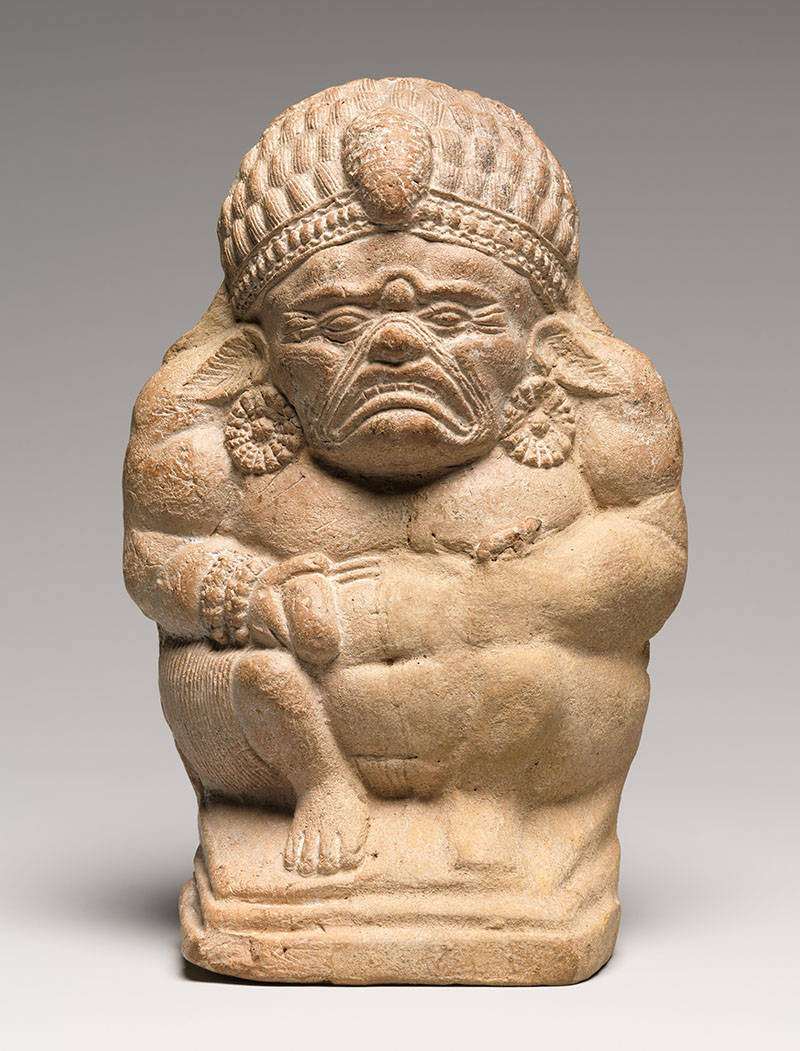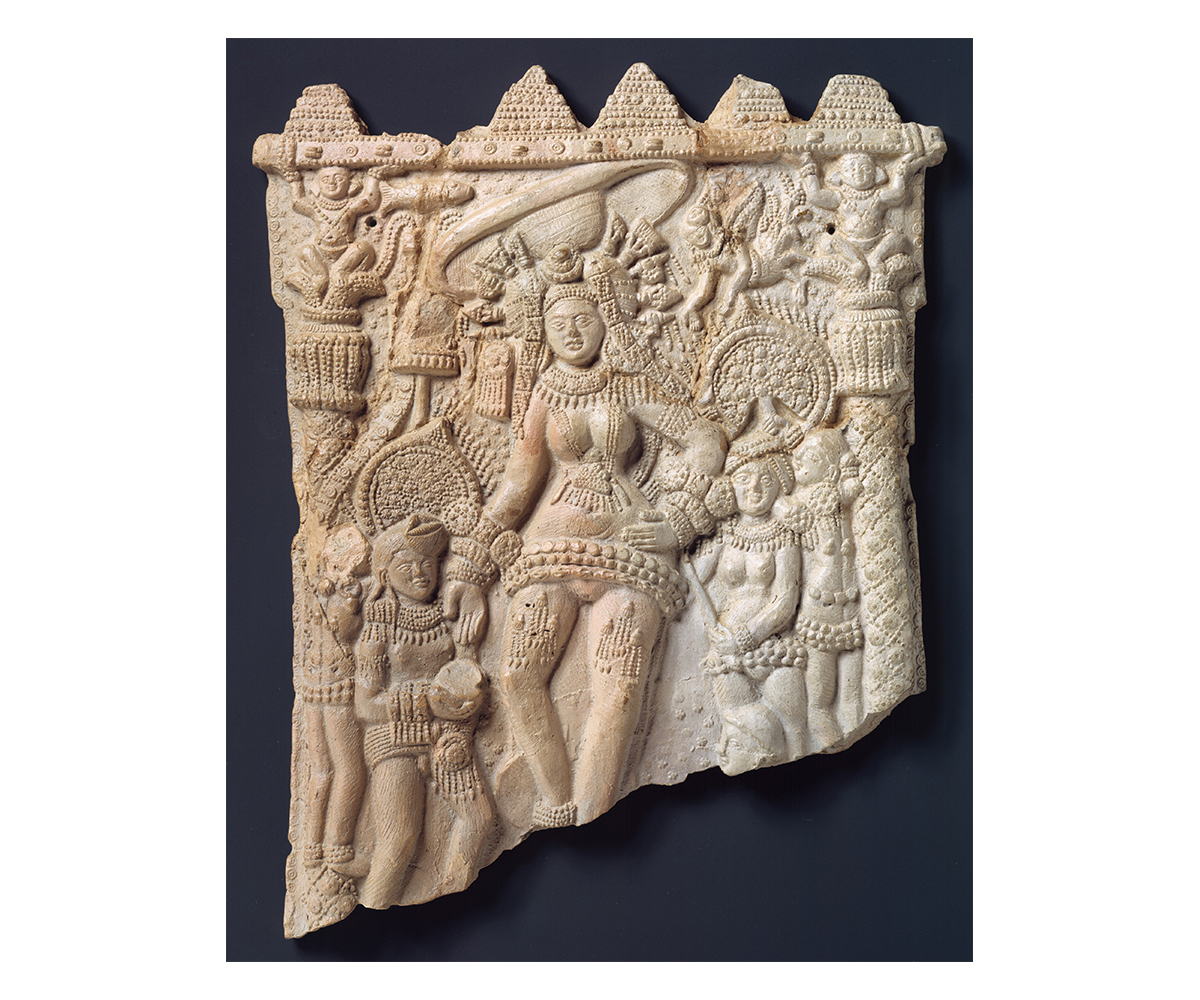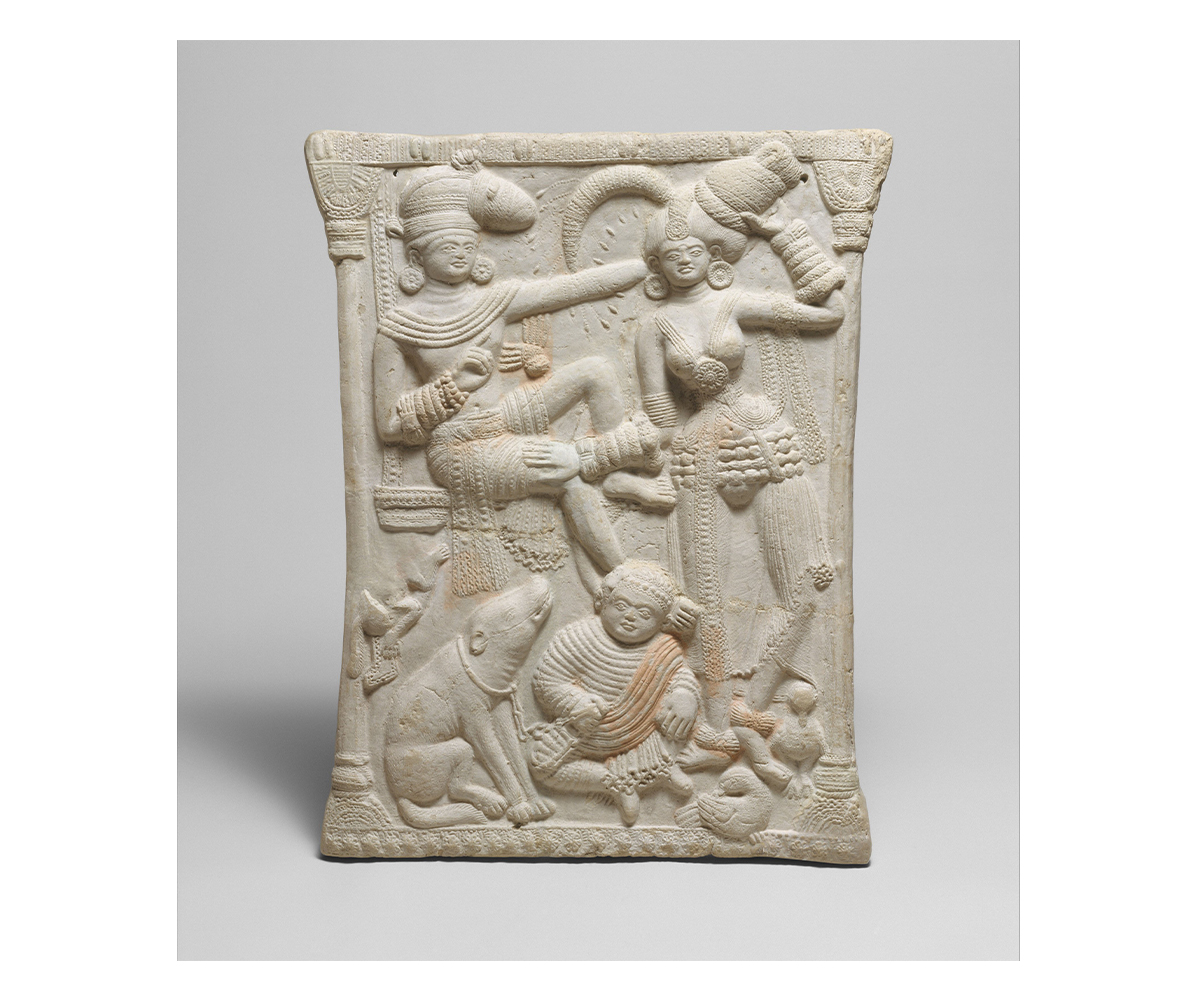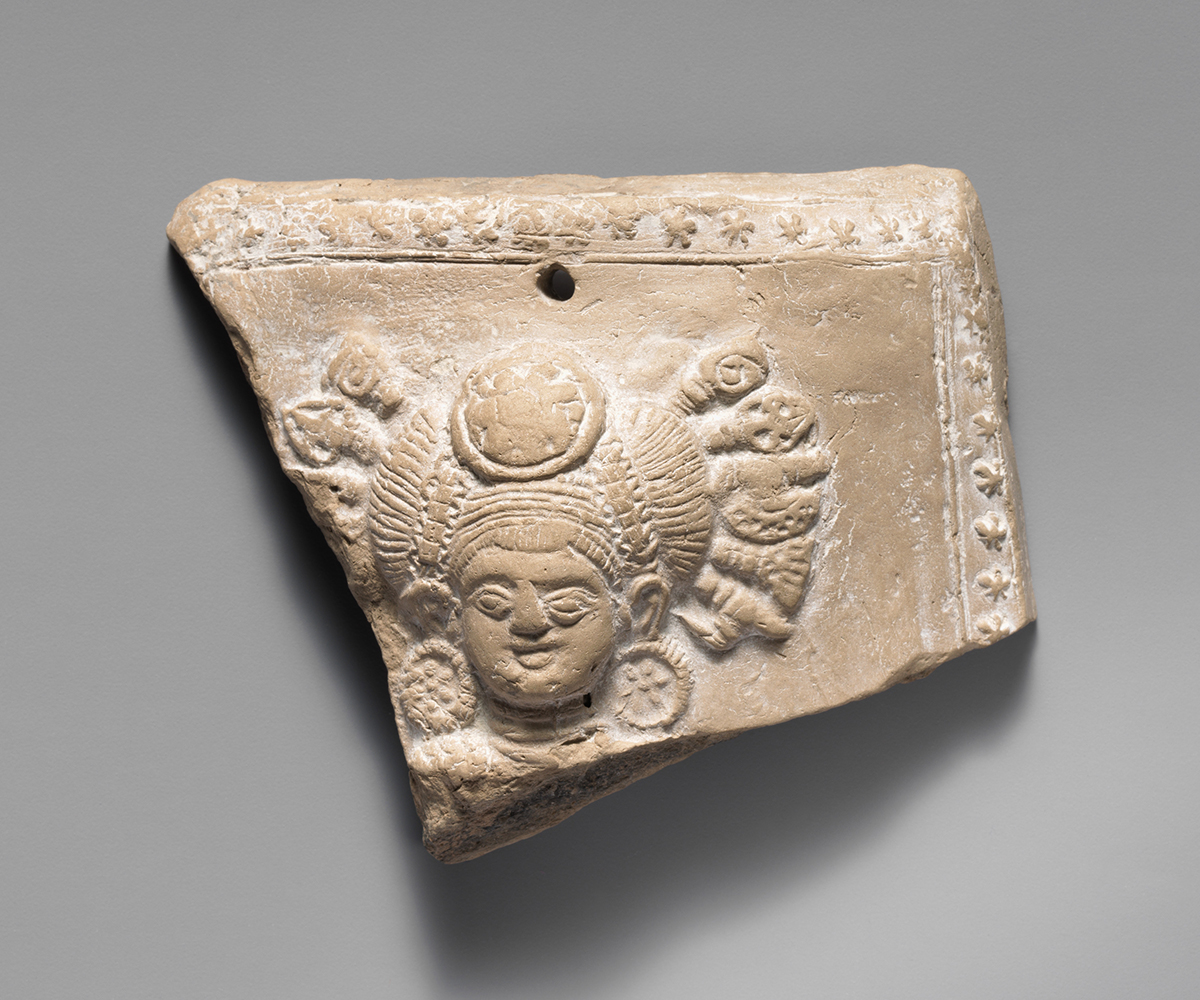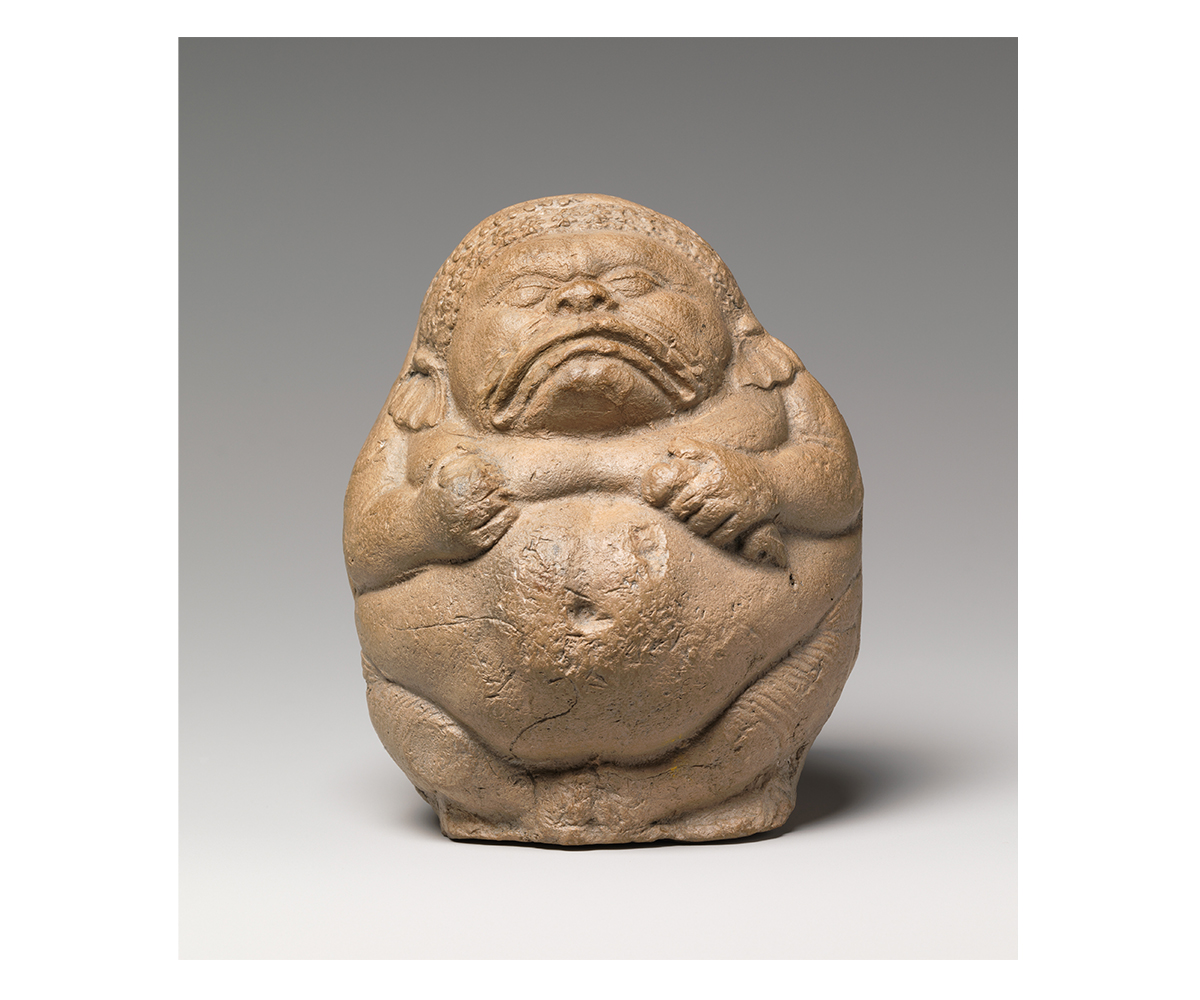ARTICLE
Chandraketugarh Terracotta Objects
Another plaque in the museum’s collection is an example of the many tableaux that have been discovered at Chandraketugarh. Dated to the first century BCE, this terracotta depicts what appears to be a family scene featuring a couple with their child, along with some animals. A seated male figure is seen on the left: he wears an elaborate turban with a conical projection, rosette-shaped earrings, a sash thrown over his shoulders and partially covering his chest, several bangles, and a short dhoti decorated with stipples indicating elaborately woven or embroidered fabric. His left arm touches the head of a standing woman wearing a similar headdress with a large decorated horn-like form curving out from it. Her jewellery comprises rosette earrings, a four-string body chain crossing over her breasts and clasped in a large rosette-form at the centre of the torso, bangles, and a hip girdle with four strings of large beads. A diaphanous skirt extending almost to her ankles reveals a slightly bent left leg. Her right arm caresses or rests on the right thigh of her male companion. Between the two figures, at their feet, a child is depicted seated, holding a dog by a leash. He is flanked by two birds appearing at the bottom right corner, while the far left edge of the plaque shows traces of an animal, possibly a monkey, appearing to climb up or towards the man’s chair. While the plaque seems to offer a poignant composition of family life, there is little further information about its iconography in a cultural or religious context because of the lack of systematic horizontal excavations at Chandraketugarh.
Objects identified as rattles, dated to the first century BCE, are also prominent among the Chandraketugarh finds, particularly those shaped like crouching yakshas. These mostly hollow objects contain a loose round pellet, and take the form of heavily bejewelled, turbanned figures with wide downturned mouths, who hold fruits in their hands. Zoomorphic rattles, shaped like horses or elephants, have also been found here, and are dated to a slightly later period than the yaksha rattles.
Chandraketugarh has faced significant challenges to the satisfactory dating and periodisation of its archaeological finds. Stratigraphic dating is not sufficiently reliable here because the deltaic soil of the region, fed by the rivers Ganga and Brahmaputra, has undergone frequent flooding and shifting since ancient times. This has meant that soil cutting often reveals layers and artefacts of mixed and erratic chronology. Thermoluminescence and other tests have been fairly reliable in testing the antiquity of some of these objects, though not for precise dating. The unique style and iconography seen in the objects, seemingly stable over several centuries, is also a subject of some debate, especially in the context of the significant changes that the rest of the subcontinent was witnessing during this period. However, some images from Chandraketugarh have been found to share a lexicon with contemporaneous South Asian sites such as Mathura, Gandhara and Amaravati, which show similar motifs.
Much of the material from Chandraketugarh has emerged from unofficial engagement in the form of mercenary digs by private landowners or other agencies, illegal pilfering, or chance discoveries during construction or agricultural work. The artefacts found commonly end up in the hands of private dealers or collectors, or in international markets, fetching high prices due to their often excellent condition. The large stream of finds from Chandraketugarh, together with their uncommonly well-preserved state, has consistently raised questions about their authenticity — which, in turn, has led to insufficient scholarly engagement, few official excavations and a lack of administrative controls around the sites at Chandraketugarh. However, systematic surveys, appropriate controls, and technically-backed vertical and horizontal excavations have the potential to shed more light on an important and unique piece of the Indian subcontinent’s history.
Bibliography
Ahuja, Naman P. Art and Archaeology of Ancient India: Earliest Times to the Sixth Century. Oxford: Ashmolean Museum, 2018.
Ahuja, Naman P. “Early Indian Moulded Terracotta: The Emergence of an Iconography and Variations in Style, circa Second Century BC to First Century AD.” PhD thesis, School of Oriental and African Studies, University of London, 2000.
Ahuja, Naman P., and Pieter Meyers. “Rumour has it. . .The Case of Chandraketugarh.” Marg 69, no. 3 (March 1, 2018): 79–91.
Metropolitan Museum of Art. “Goddess and Attendants.” Accessed February 27, 2023. https://www.metmuseum.org/art/collection/search/38518.
Metropolitan Museum of Art. “Plaque with a Royal Family.” The Collection: Asian Art. Accessed February 27, 2023. https://www.metmuseum.org/art/collection/search/38575.




